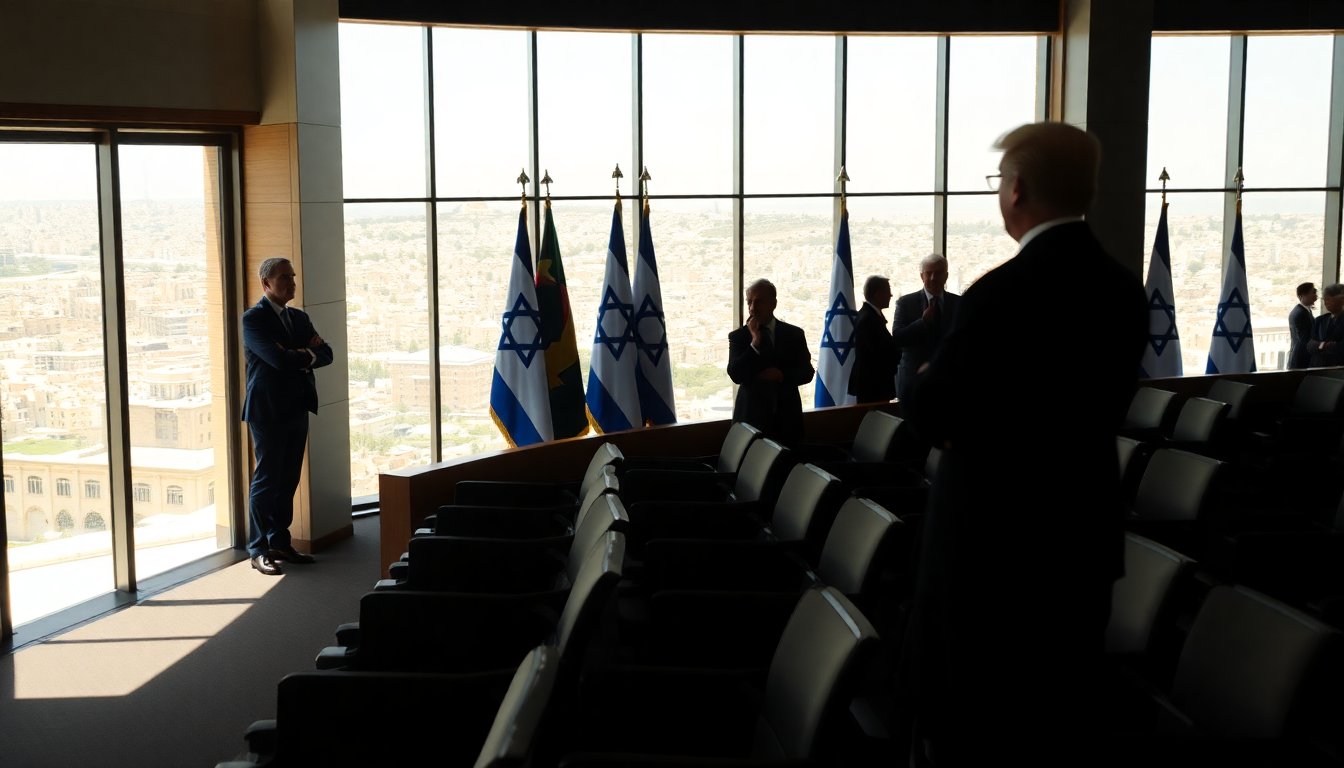Table of Contents
In a significant moment for international relations, U.S. President Donald Trump addressed the Knesset, Israel’s parliament, amid heightened tensions and recent hostilities between Israel and Hamas. This event coincided with the release of hostages, generating a mix of hope and skepticism among those affected by the ongoing conflict. As humanitarian efforts increase in the region, questions arise about the sustainability of peace initiatives beyond their initial stages.
The atmosphere in Israel was charged with emotion as families of the freed hostages expressed relief and gratitude. One father remarked, “We’re thrilled, the whole country is thrilled,” reflecting the collective joy that accompanied the release. However, the situation remains precarious, with many residents of Gaza cautiously optimistic about the ceasefire, yet fearing that violence may not have fully subsided.
Humanitarian efforts and the situation in Gaza
Over the past year, the people of Gaza have faced significant hardships, notably a shortage of cooking gas. This essential resource has begun to flow back into the region, indicating a positive shift in humanitarian conditions. Families that once resorted to cooking over open flames can now access basic necessities, thanks to the efforts of various humanitarian organizations.
Latest reports indicate a marked improvement in the volume and variety of supplies entering Gaza. However, experts caution that the supply chain must be further enhanced in the coming days to meet the conditions outlined in the peace agreement. The United Nations Office for the Coordination of Humanitarian Affairs (OCHA) noted that the recent influx of resources, including tents, food items, and medical supplies, represents a crucial step forward for displaced populations.
Challenges and internal conflicts
Despite the optimism surrounding the ceasefire, underlying tensions could complicate the path to lasting peace. Reports have surfaced of clashes between Hamas fighters and local clans, raising concerns about potential internal strife within Gaza. As the landscape evolves, the road to reconstruction remains uncertain, with many details expected to be discussed in the upcoming peace summit in Egypt.
Trump’s pivotal role in the peace discussions
During his address to the Knesset, Trump captured the attention of lawmakers and citizens alike, receiving a standing ovation for his remarks. His presence was marked by the distribution of red MAGA-style hats emblazoned with the phrase “Trump the peace president.” This carefully orchestrated event took place shortly after the release of hostages, allowing Trump to bask in a moment of triumph.
As U.S. flags waved in cities like Tel Aviv and Jerusalem, some citizens drew comparisons between Trump and historical figures such as Cyrus the Great, noted in the Bible for freeing the Jewish people from Babylonian captivity. Despite mixed feelings about Trump’s policies, many acknowledged his role in facilitating significant developments in the region.
Future prospects and international collaboration
Looking ahead, both Israeli Prime Minister Benjamin Netanyahu and Palestinian President Mahmoud Abbas are set to participate in a peace summit in Sharm el-Sheikh. This gathering aims to solidify the agreement to end the conflict while reaffirming both parties’ commitment to peace. Various nations, including Canada, are also engaging in these discussions, with the prospects of a two-state solution remaining a focal point of international diplomacy.
Amidst the optimism, challenges persist. Trump’s assertion that the war is over contrasts sharply with Netanyahu’s cautions about the ongoing situation. As negotiations continue, key aspects of the peace plan, such as the disarmament of Hamas and the timeline for Israeli withdrawal from Gaza, will need to be addressed. The outcome of these talks could significantly impact the region’s future.
As the world watches the unfolding events in Israel and Gaza, the potential for lasting peace hangs in the balance. The combination of humanitarian efforts, political negotiations, and community resilience will play a vital role in shaping the path forward.


